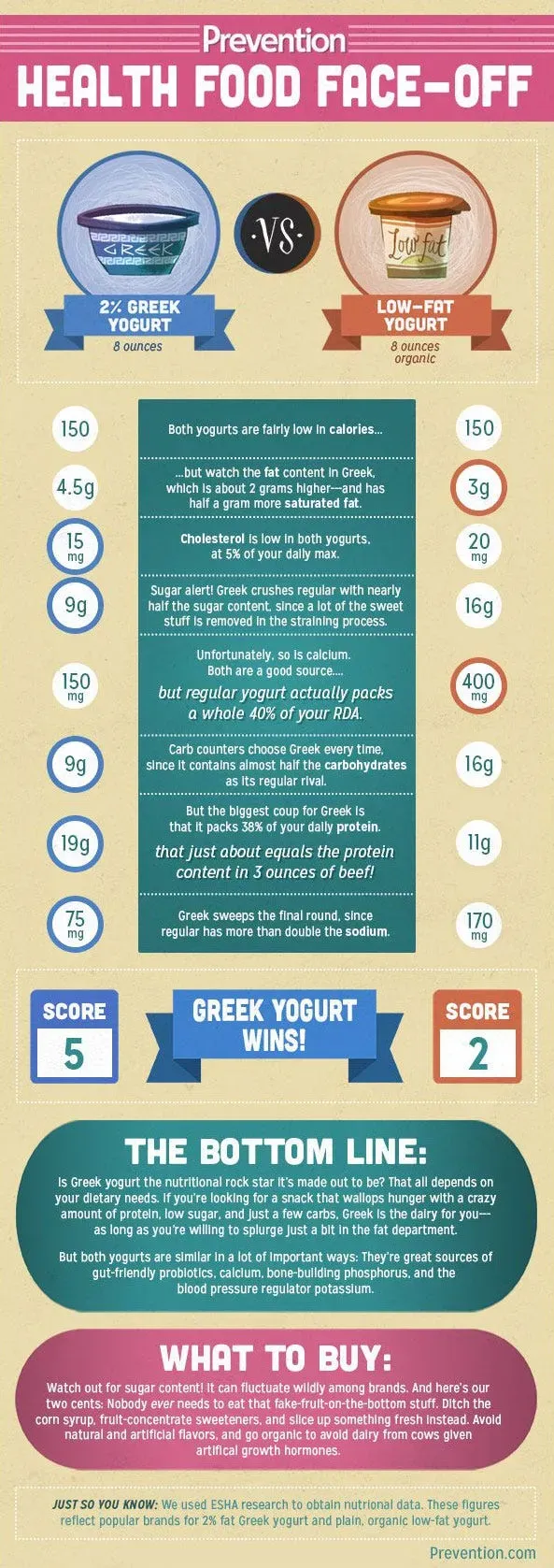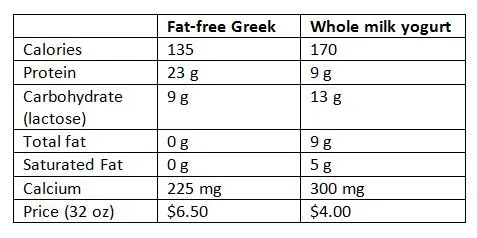Table of Contents
Walk down the dairy aisle and you're faced with a wall of choices. Among the milk, cheese, and butter, yogurt stands out, often split into two main camps: full fat and low fat. It’s a classic grocery store standoff, the great debate of full fat yogurt vs low fat yogurt.
What's the Real Difference Between FullFat and LowFat Yogurt?

What's the Real Difference Between FullFat and LowFat Yogurt?
so you're diving into this full fat yogurt vs low fat yogurt thing, right? At its core, the difference is pretty straightforward, but it sets the stage for everything else. Think about the milk they start with. Full-fat yogurt is made from whole milk, which means it keeps all, or most, of its natural milk fat – usually around 3.25% or higher. When you see "low-fat" or "non-fat," it means they've processed the milk to remove a significant amount of that fat before turning it into yogurt. Low-fat typically has between 0.5% and 2% fat, while non-fat (or fat-free) aims for less than 0.5% fat. It’s essentially about how much of the creamy stuff from the original milk makes it into the final product.
Nutritional Showdown: Full Fat Yogurt vs Low Fat Yogurt
Alright, let's get down to the nitty-gritty: the actual numbers. When you look at the nutrition labels for full fat yogurt vs low fat yogurt, the most obvious difference is, well, the fat. Full-fat versions pack more calories because fat is calorie-dense (about 9 calories per gram compared to 4 for protein and carbs). But don't just stop at the fat line. Often, when manufacturers pull out the fat, they add sugar or other thickeners to make up for the lost flavor and texture. This means your "healthy" low-fat option might have a surprisingly high amount of added sugar, which nobody needs more of. Protein content can be similar, especially if comparing plain versions, but sometimes the processing affects this too. Vitamins? Fat-soluble vitamins like A and D are often higher in the full-fat stuff, assuming the milk was fortified.
Nutrient (approx.) | Full Fat Plain Yogurt (per 100g) | Low Fat Plain Yogurt (per 100g) |
|---|---|---|
Calories | 60-80 | 40-60 |
Total Fat | 3-5g | 0.5-2g |
Saturated Fat | 2-3g | 0.3-1g |
Protein | 3-5g | 3-5g |
Carbohydrates | 4-6g | 5-8g (often higher due to added sugar) |
Added Sugar | 0g (in plain) | Variable (often added) |
Beyond the Numbers: Taste, Satiety, and Your Body's Response

Beyond the Numbers: Taste, Satiety, and Your Body's Response
Taste and Texture: More Than Just Creaminess
Beyond the cold hard numbers on the label, there's the actual experience of eating yogurt. Let's be honest, texture matters. Full-fat yogurt has a naturally rich, creamy texture that coats your tongue. It feels substantial. When fat is removed, that texture disappears. Manufacturers often try to replicate it by adding thickeners like starches or gums, but it's rarely the same. It can become gelatinous, watery, or just...off. Then there's the flavor. Fat carries flavor compounds. Removing fat can mute the natural tang of the yogurt, which is why companies often dump in sugar to make it palatable. You think you're making a healthy choice with low-fat, but you might be trading fat grams for added sugar grams, and ending up with something that tastes artificially sweet and feels less satisfying.
Think about the last time you had really good, plain full-fat Greek yogurt. It's thick, maybe a little tangy, and smooth. Now compare that to some watery, "fat-free" version that leaves a strange aftertaste. It's not just preference; it's a fundamental difference in composition affecting how your brain perceives the food. Your body expects a certain mouthfeel with fat, and when it's missing, something feels incomplete.
Satiety: Feeling Full and Staying That Way
One of the most significant differences people report is how full they feel after eating. Fat takes longer to digest than carbohydrates or protein. When you eat full-fat yogurt, the fat contributes to a feeling of satiety – that pleasant fullness that signals you're done eating and keeps hunger at bay for longer. This isn't just anecdotal; studies show fat can help regulate appetite hormones. If you eat low-fat yogurt, especially one loaded with sugar, you might get a quick energy spike from the carbs, but without the staying power of fat, you could find yourself rummaging in the pantry again an hour later. It's the classic snack trap: eat something low-fat and sugary, feel hungry again fast, eat more. It’s a cycle designed to keep you eating, not feeling satisfied.
Consider this:
- **Full-fat yogurt:** More likely to keep you full until your next meal.
- **Low-fat yogurt (especially sweetened):** Might lead to quicker hunger pangs.
- **Added sugars in low-fat:** Can cause blood sugar spikes and crashes, triggering more hunger.
How Your Body Responds to the Fat and Sugar
The type of calories matters. When you consume fat, particularly in its natural matrix within a food like full-fat yogurt, your body processes it differently than it does refined sugar. Dietary fat, even saturated fat from dairy, doesn't cause the same rapid spike in blood sugar and insulin that added sugar does. Insulin is a storage hormone; frequent spikes can encourage your body to store fat. While full-fat yogurt has more calories upfront, those calories, particularly from fat and protein, tend to be more satisfying and have a less disruptive effect on your metabolism compared to calories from added sugars in low-fat versions. It’s not just about the total calories, but how those calories interact with your hormonal system.
Think of it like fuel efficiency. Full-fat yogurt provides a steady burn, keeping you going. Sugary low-fat yogurt is like pouring lighter fluid on a fire – a quick, intense flare-up followed by embers and the need for more fuel.
Choosing Your Champion: Picking Between Full Fat Yogurt vs Low Fat Yogurt

Choosing Your Champion: Picking Between Full Fat Yogurt vs Low Fat Yogurt
Your Goals Dictate Your Choice
so we've broken down the science and the mouthfeel. Now comes the part where you actually have to decide. Which one do you grab off the shelf? The truth is, there's no single "right" answer for everyone in the full fat yogurt vs low fat yogurt debate. It really boils down to your personal health goals, your overall diet, and what makes you feel best and most satisfied. If you're genuinely struggling to feel full between meals and find yourself snacking constantly, the extra fat in full-fat yogurt might be your friend. It provides that sustained energy and satiety we talked about. On the other hand, if you're carefully managing calorie intake for weight loss and find that a small amount of healthy fat from other sources is enough for you, a plain low-fat or non-fat version might fit better into your daily calorie budget, provided you're not loading it up with sugary mix-ins.
Think about your plate for the day. Are you getting healthy fats from avocados, nuts, and olive oil? Or is your diet generally low in fat? Your yogurt choice should complement your broader eating pattern, not exist in isolation. Don't just pick low-fat because the packaging screams "healthy" – dig a little deeper into what that actually means for your body.
Read the Label Like a Detective
Regardless of whether you lean towards full fat yogurt vs low fat yogurt, becoming a label-reading ninja is non-negotiable. This is where companies get sneaky, especially with low-fat options. Always, and I mean always, check the "Added Sugars" line. A plain full-fat yogurt usually has zero added sugar, maybe 4-6 grams of natural sugar from the milk (lactose). A low-fat version that tastes sweet almost certainly has sugar dumped in. Sometimes it's cane sugar, sometimes it's corn syrup, sometimes it's fruit juice concentrate – it's all sugar your body has to deal with. Compare the carbohydrate count too; a significantly higher carb number in the low-fat version often signals added sugar or thickeners.
Look at the ingredients list. It should be simple: milk and live active cultures. Maybe cream for full-fat. If you see a laundry list of gums, starches, and sweeteners, put it back. You're buying a processed dessert masquerading as health food. The goal is nutrient density and genuine satisfaction, not just hitting a low-fat target on a label.
- Check "Added Sugars" first and foremost. Aim for 0g in plain varieties.
- Look at the ingredients list: Milk and cultures are key.
- Compare protein content – higher is generally better for satiety.
- Don't fear the fat line in full-fat versions; focus on the *total* nutritional profile.
Making Your Yogurt Choice: It's Not Just About the Fat
So, when it comes to full fat yogurt vs low fat yogurt, the simple answer is, well, not simple. Ditching all the fat for the low-fat version didn't magically solve everyone's health puzzles. Often, sugar or other additives stepped in to make up for lost flavor and texture. Full-fat versions bring satiety to the table, helping you feel full longer, which can be a real advantage if you're trying to manage your appetite. Nutritional profiles differ, but focusing solely on fat grams misses the bigger picture of how the food affects your body and your hunger. Ultimately, the "better" choice often comes down to your personal dietary needs, how you plan to use the yogurt, and what helps you stick to a balanced eating pattern without feeling deprived. Neither is inherently evil; it's about fitting it into your overall diet.
